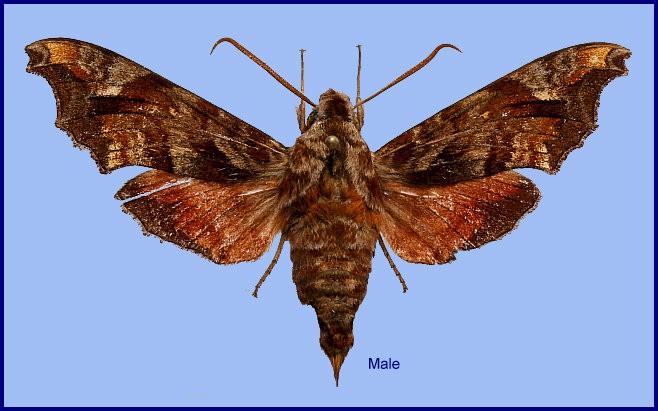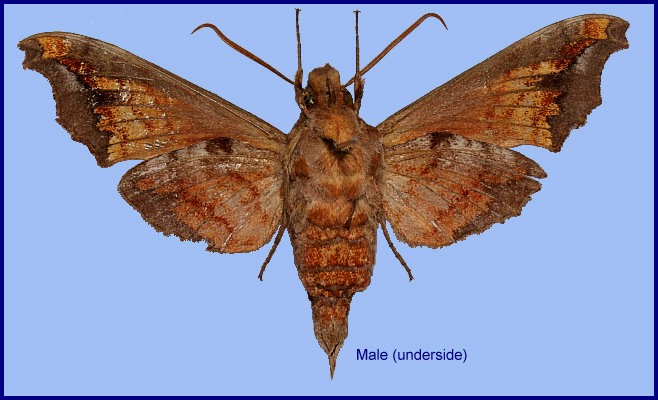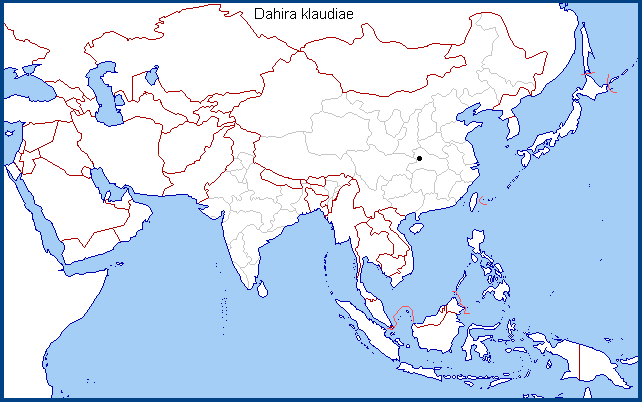

Dahira klaudiae Brechlin, Melichar & Haxaire, 2006. In: Brechlin & Melichar, 2006, Nachr. ent. Ver. Apollo (N.F.), 27(4): 210. Type locality: China, Hubei, Daba Shan, Songluohe, [near Shennongjia,] 31°37'N 110°33'E, 1300m.
Similar to Dahira yunnanfuana, but ground colour noticeably browner, and lacking the forewing grey areas of that species (in fresh specimens). Forewing discal spot yellow; in Dahira yunnanfuana it is black. Hindwings reddish; these are brownish in Dahira yunnanfuana.
In the male genitalia, harpe and phallus differ from those of Dahira yunnanfuana. The most notable difference is in the shape of the harpe, which in Dahira klaudiae is much more strongly tapered in from the base to the apex, and sharper than in Dahira yunnanfuana. In addition, the apical process of the phallus in Dahira klaudiae is extremely flattened and weakly toothed, and the lateral projection is filiform, very thin, and not toothed (Haxaire, Melichar & Manjunatha, 2021).

Inhabits middle to high elevation (700-1300m) evergreen broad-leaf forest (Jiang, Xu, Lin, Liu, Wang & Hu, 2025).

China: iv-v (Shaanxi); v (Daba Shan).
OVUM: Unknown.
LARVA: Unknown.
PUPA: Unknown.
Larval hostplants. Unknown.
Unknown.
China: Shaanxi (Gaobeicun, SE Hanzhong, 700m); Hubei (Daba Shan, Songluohe (near Shennongjia - 31°37'N 110°33'E), 1300m).
Endemic to China.

Holarctic; eastern Palaearctic region.
 Return to Sphingidae of the Eastern Palaearctic species list
Return to Sphingidae of the Eastern Palaearctic species list